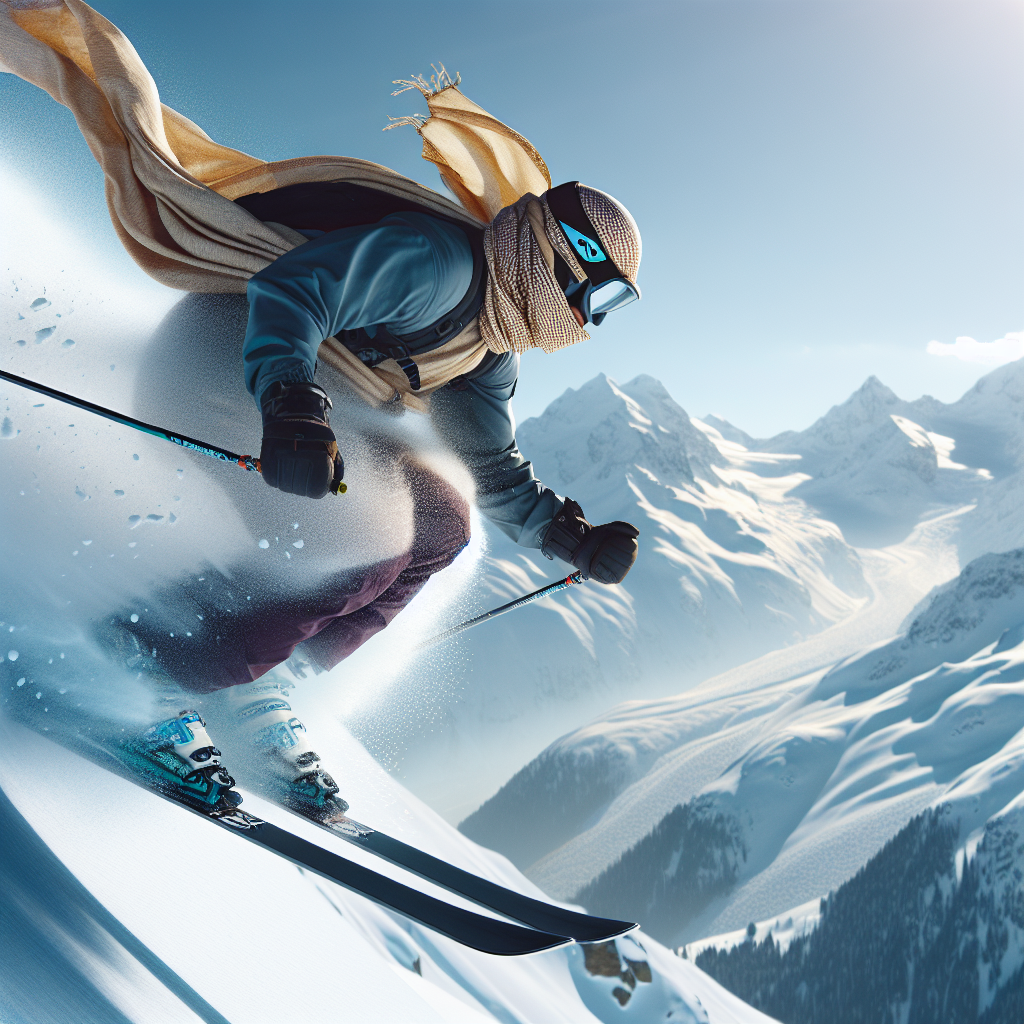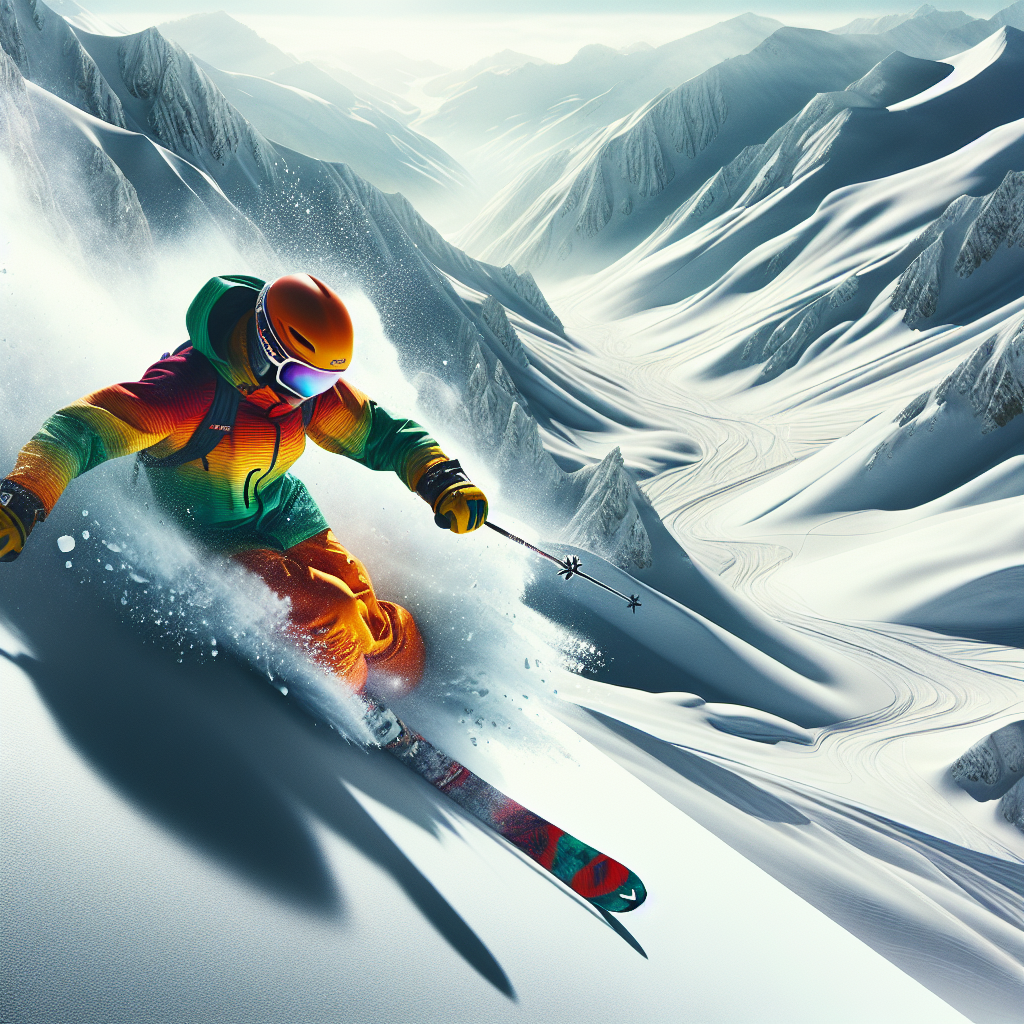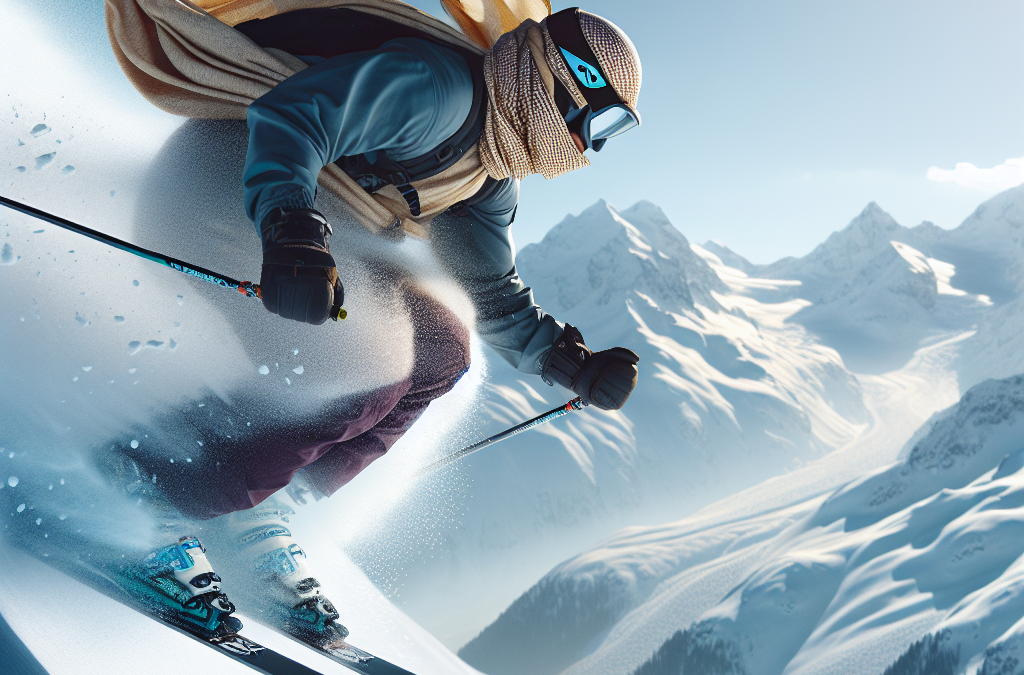Imagine yourself carving through untouched snow, adrenaline rushing as you navigate off-piste terrains, and experiencing the pure joy that freeride skiing brings. It may sound thrilling and slightly intimidating, especially if you’re a beginner, but worry not; you’re about to embark upon an exhilarating journey. In the “Beginner’s Guide To Freeride Skiing,” you’ll get an intriguing insight into the world of freeride skiing, from the essentials of gear selection to the intricacies of mastering techniques and ensuring safety. This guide will serve as your handy companion, gradually setting you up on a path of expertise and offering an opportunity to tap into a newfound passion.

Understanding Freeride Skiing
Freeride skiing offers a unique way to experience the mountains. A blend of adventure, creativity, and athleticism, it’s a form of skiing that delights in breaking free from the constraints of traditional piste skiing.
Definition of Freeride Skiing
Freeride skiing is a form of skiing that predominantly takes place on untouched, off-piste terrain. This style of skiing encourages exploration, self-expression, and a deep respect for the natural world. It’s about you, your skis, and the mountain, without the boundary ropes of conventional ski runs.
History and Evolution of Freeride Skiing
The birth of freeride skiing is often attributed to the early skiers of Chamonix, France in the 1970’s seeking new challenges and thrills beyond traditional, groomed pistes. From its counter-culture roots, freeride skiing now enjoys a global following, and its spirit of adventure influences many aspects of modern skiing culture.
Differences between Freeride Skiing and Traditional Skiing
The main difference between freeride skiing and traditional skiing lies in their relationships with the terrain. Traditional skiing, often referred to as piste skiing, involves skiing down groomed, marked slopes. Freeride skiing, on the other hand, takes place off the beaten path, in areas untouched by grooming machines- meaning skiers need to make their own path and tackle obstacles like deep snow and cliffs.
Basic Freeride Skiing Techniques
Like any sport, freeride skiing builds on a set of fundamental techniques. Mastering these will increase your enjoyment and safety on the mountain.
Body Positioning and Balance
While skiing, maintaining a balanced and centered body position is crucial. It allows you to effectively steer your skis, absorb shocks, and keep your balance in challenging conditions. Good posture involves keeping your knees bent, your torso slightly lean forward, and placing your weight on the balls of your feet.
Turning Techniques
Freeride skiing often takes place in deep, fresh snow known as powder, where traditional turning techniques can feel very different. To turn effectively in powder, lean back slightly to bring your ski tips up, and use smooth, gentle movements.
Powder Skiing
Powder skiing is the holy grail of freeride skiing. It feels and looks different from skiing on hard-packed snow, requiring you to be more dynamic with your weight shifts. While skiing in deep powder, balance of the whole ski (not just the inside edge) is important.
Controlling Speed
Controlling your speed is crucial for navigating unpredictable terrain safely. Your turns are your most valuable tool for speed control. Remember to finish each turn by pointing your skis uphill slightly – this naturally regulates your speed.
Essential Freeride Skiing Gear
Just as with any other outdoor activity, having the right gear for freeride skiing is critical for your performance and safety.
Choosing the Right Skis
The skis you choose will greatly impact your experience. Freeride skis are wider, allowing for better floatation in deep powder. Match the ski length to your height and skill level – longer skis for more skilled skiers, shorter ones for beginners.
The Importance of Ski Boots
A well-fitted ski boot is the key to efficiently transmitting your movements to your skis. Ensure that your boots fit snugly but comfortably and offer good support to your ankle and foot.
Safety Equipment: Helmets and Pads
A helmet is an essential piece of safety gear, protecting your head from impacts. Likewise, knee and elbow pads also add an extra layer of protection.
Avalanche Safety Devices
Carrying proper avalanche safety equipment is critical in off-piste conditions. This typically includes an avalanche transceiver, probe, and shovel. It’s vital you know how to use this equipment in case of an emergency.
Choosing Your Freeride Skiing Locations
Choosing your location wisely contributes to both the enjoyment and safety of your freeride skiing experience.
Understanding Terrain Features
Knowing how to read terrain is a crucial tool in your freeride toolkit. Aspect, slope steepness, and the presence of terrain traps are some features you should consider.
Scoping Out Off-Piste Areas
Picking out your off-piste areas is an essential part of planning your route. Consider factors like the condition of the snow, the steepness of the terrain, and the risk of avalanches.
Staying Within Resort Boundaries
Although freeride skiing is about exploring, it’s important to stay within the resort boundaries unless you are properly equipped and experienced for backcountry travel.
Evaluating Snow Conditions
Reading snow conditions is essential for freeride skiing. This helps anticipate changes in the skis’ behavior and avoid hidden dangers such as weak layers in the snowpack.

Building Your Freeride Skiing Skills
Like any sporting endeavor, freeride skiing requires confidence, technique, and experience. Here’s how to build these essential skills.
Taking Ski Lessons
Taking skiing lessons from a certified instructor is a great way to elevate your skills. They’ll teach you the fundamentals, and they can correct your form, teach you new techniques, and boost your confidence.
Continuous Practice
Practice makes perfect! Spend as much time on the slope as you can. The more you ski, the better you’ll become. Try to challenge yourself by tackling steeper terrains or testing different snow conditions.
Learning from Experienced Skiers
Find an experienced skiing buddy and learn from them. They can offer you tips and tricks they’ve learned from their time on the mountain.
Safety Measures in Freeride Skiing
While freeride skiing can provide exhilarating experiences, it’s also a sport that requires a high level of awareness and preparation to minimize risks.
Awareness of Avalanche Danger
Understanding the avalanche risk before you head out is essential. Always check avalanche safety reports and carry avalanche safety equipment.
Understanding Weather Forecast
Keep a keen eye on weather forecasts and changes in weather patterns. A sudden weather change can drastically affect the safety and enjoyment of your day.
Early Signs of Hypothermia and Frostbite
Knowing the early signs of hypothermia and frostbite could save your life. Always ensure you are well-equipped to handle the cold and take appropriate action if you start to display symptoms.
Navigating Safely in Steep Terrain
Navigating safely in steep and uneven terrain is a critical skill. Always evaluate the terrain before descending and ensure you have the necessary skills to safely navigate it.
Freeride Skiing Fitness and Conditioning
Being in good physical condition is important in freeride skiing. It improves performance, reduces fatigue, and decreases the likelihood of injury.
Pre-Season Conditioning
Begin your pre-season conditioning a few months before the season starts. Focus on cardio exercises, strength training, particularly your legs and core, and balance exercises.
In-Season Fitness
During the skiing season, keep yourself fit with regular exercises. Try to maintain your strength, flexibility, and stamina.
Importance of Flexibility and Balance Training
Flexibility and balance are crucial for freeride skiing. Maintain your balance skills and keep your muscles flexible to prevent injuries and improve performance.
Nutrition for Skiing
A balanced diet rich in proteins, carbohydrates, and hydrating foods will keep your energy levels stable and enhance your endurance.
Competitions and Festivals in Freeride Skiing
Every year, various freeride skiing competitions and festivals bring together the global freeride community.
Freeride World Tour
This is the premier event in freeride skiing. Top skiers from around the globe compete in this prestigious tour for the title of World Champion.
Local and Regional Competitions
Participating in local and regional competitions is a great way to challenge your skills, meet other skiers, and have some fun.
Snow Festivals and Gatherings
Snow festivals and community gatherings are vibrant expressions of ski culture, filled with music, races, and good vibes.
Entering Your First Competition
Entering your first freeride competition can be thrilling. Ensure you’re confident in your abilities, know the rules, and most importantly, have fun.
Joining a Freeride Skiing Community
Being part of a community can enhance your skiing experience. It’s a great way to share your passion, exchange knowledge, and make new friends.
Finding a Local Ski Group
Joining a local skiing group can provide invaluable support, knowledge sharing, and camaraderie.
Participating in Online Ski Forums
Online forums offer a platform to discuss all things ski-related, from gear advice to route suggestions, and more!
Attending Skiing Workshops and Clinics
Workshops and clinics are great for improving your skills and understanding of the sport. They provide professional coaching and a chance to learn new things.
Sustaining the Sport: Environmental Considerations in Freeride Skiing
Respect for the environment is integral to freeride skiing. After all, the sport’s future hinges on the health of our mountain environments.
Leave No Trace Principles
These principles provide guidance on how to minimize your impact on the environment. Essential principles include resist carving new tracks in untouched areas and taking your trash with you.
Awareness of Wildlife and Biodiversity
Always be mindful of the wildlife in the area where you’re skiing. Avoid disturbing animals or damaging their habitat.
Sustainable Travel and Tourism
Promote sustainability by choosing eco-friendly travel options, supporting local businesses, and practicing respectful tourism. Remember, preserving the mountains is preserving the sport!
Freeride skiing is more than just a sport– it allows you to connect deeply with nature, challenges your physical and emotional boundaries, and foster a sense of community with fellow skiers. Prepare yourself, respect the environment, and most importantly, enjoy the ride. Happy skiing!

